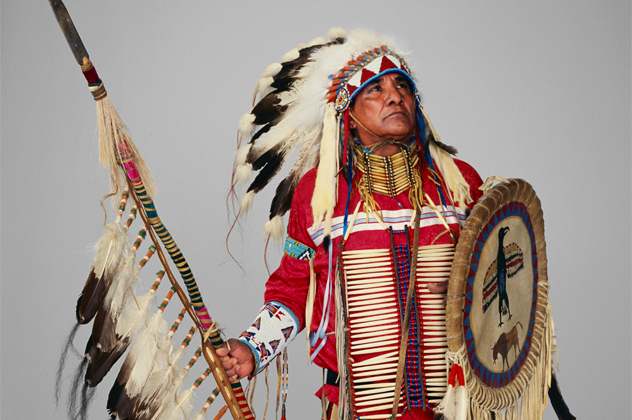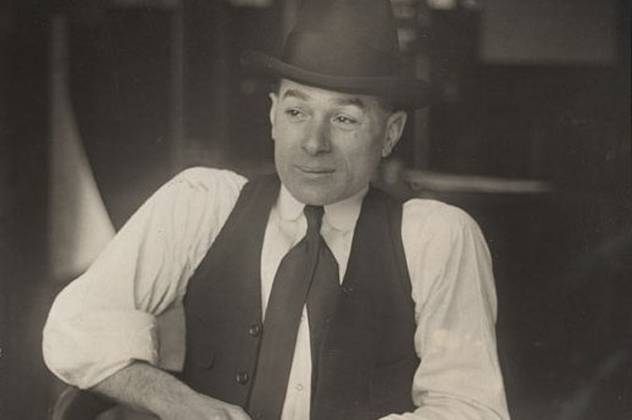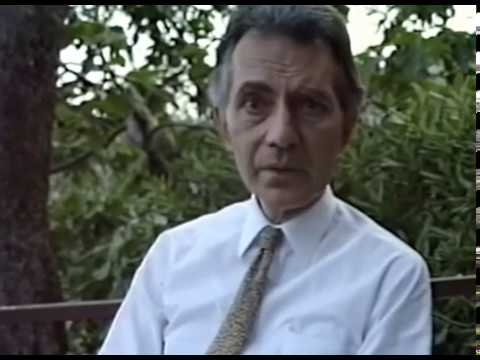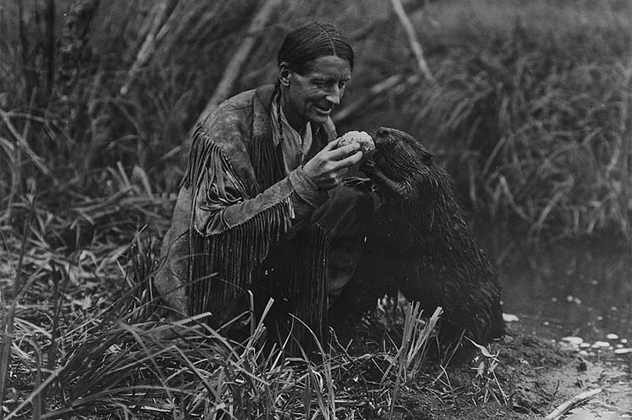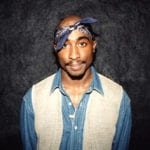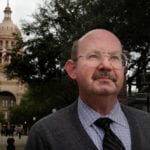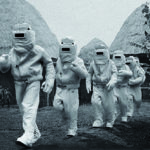10Sherry Stanley Jimenez
Since about 2000, Sherry Stanley Jimenez from Wilkes County, North Carolina, has been using her ability to speak Spanish to cheat people out of money. For example, she would go to court and translate for people who only spoke Spanish, and she would then tell those people that they owed her money. Other times, she would sell a car to someone in the Mexican community, and then after she took their money, the car would never be delivered. How she was able to avoid getting caught for 14 years was by pretending to be a Mexican citizen. She spoke Spanish fluently and had documentation that said she was from Mexico. By doing this, she was able to get new identities and find new homes and jobs, always staying ahead of the law. In March 2014, the authorities finally caught up with her. Her boyfriend at the time of the arrest believed that she was a Mexican national and only learned about her life as a con artist on the day she was arrested. She is currently awaiting trial in North Carolina, and she is also wanted in Virginia, Florida, and Tennessee.
9William Montgomery McGovern
In about 1810, when global exploration started to become more prevalent, Tibet decided to close its borders, making its capital, Lhasa, a forbidden city. It was a walled city, and in order to get there, you had to cross the Himalayan Mountains and then trek deep into the country. This made it almost impossible for Westerners to sneak into the city. One person who wanted to get into the city was William Montgomery McGovern. McGovern got a degree in divinity in Buddhism from a monastery in Kyoto, Japan, and then went to study at Oxford. In the winter of 1922, he made the trek across the Himalayan Mountains with two guides. Once McGovern made it inside the borders of Tibet, he put lemon juice in his blue eyes to darken them and then put on goggles to make it look like he had suffered snow blindness. He stood naked in the frigid cold and had one of the guides stain his body with a mixture of walnut juice and iodine. Finally, he dressed himself as a Tibetan porter and continued on his trek. He went first to the city of Shigatse and then to Lhasa, making him one of the first Westerners to visit the city. Along the way, McGovern contracted dysentery, and once inside the city, he told city officials who he was and that he was sick. They helped him, but a group of monks found out that he was in the city. They showed up at the building where he was staying and started hurling rocks at it. McGovern put on his Tibetan clothes, snuck out of the building, and joined the men in throwing rocks. McGovern claimed that, after he was exposed, he met the Dalai Lama and left Tibet a short time later.
8Nelson Scott Simpson
The world of professional wrestling is no stranger to people playing caricatures of ethnic stereotypes. As offensive as it sounds, it was just common practice because it made narratives much easier to play out. This brings us to Nelson Scott Simpson, who grew up in Minneapolis, Minnesota. Originally, he trained to be a football player, but after an injury, he started wrestling in 1984 under the name Nikita Koloff: The Russian Nightmare. Nikita’s backstory was that he was a new immigrant from Moscow, and to stay in character, Simpson didn’t speak a word of English for 13 months, except to his “uncle” and teammate Ivan Koloff. Ivan wasn’t Russian, either—he was a Canadian named Oreal Perras. In order to sell the angle and stay in character, Simpson needed help with everything in life. Simpson took Perras and used him as his translator so that he could get an apartment and do other day-to-day things. Simpson even went as far to have his name legally changed to Nikita Koloff. After 13 months, he would only speak in clipped English with a strong Russian accent. The amazing thing is that he kept up the persona for years. He even learned to speak Russian and had his son’s birth certificate indicate that he was born in Lithuania. Simpson kept up the illusion that he was Russian all the way up to his retirement in 1992. He said it surprised many people when they learned that he spoke fluent English. After his retirement, Simpson became a born-again Christian and now has his own ministry.
7Vijay Chokal-Ingam
When it came time to apply for medical school in 1998, Vijay Chokal-Ingam didn’t think his marks were good enough for an Indian-American to get accepted. His marks were slightly above average, but not amazing. So Chokal-Ingam changed his appearance by shaving his head and cutting his eyelashes. He then applied to 22 different schools using the name JoJo Chokal-Ingam, which was his middle name, and said that he was African-American. Out of the 22 schools, half of them interviewed him, and he was finally accepted at Saint Louis University Medical School, where he posed as an African-American for two years. During that time, he says that he went through such stereotypical African-American experiences such as being harassed by police and accused of shoplifting. Chokal-Ingam claims that the only reason he got in was because of affirmative action. Critics point out that there was no comparison to prove that; after all, he never even tried to apply as an Indian-American.
6Chico Colon Meridan
In 1914, Chief Two Moon Meridas moved to Waterbury, Connecticut, and started selling herbal medicine on the streets. When the 1918 flu epidemic hit the US, Two Moon became renowned because, apparently, none of his patients died. This helped the popularity of his herbal remedy Bitter Oil, which was a laxative that was marketed as a cure-all. From there, he came up with a repertoire of herbal patents, and his remedies were so popular that he built a factory. The business was very lucrative, and Two Moon became an incredibly wealthy man. Two Moon claimed he was a Pueblo Indian and that his father was a medicine man. According to him, his formulas were developed using traditional Native American recipes. Except that Two Moon wasn’t a Native American at all. He was born Chico Colon Meridan. His father, Chico Meridan, was Mexican, and his mother was named Mary Tumoon, which is where he got his native name. It is believed that he developed the herbal remedies while working as a janitor and started selling them on the streets of Philadelphia. Two Moon appealed to the United States government for official status as a native, but he was denied. He died in 1933, claiming up to his death that he was a Native American. His wife continued to run the factory into the 1970s.
5George Herriman
George Herriman is a famed and influential cartoonist known for his comic strip Krazy Kat, which ran from 1913 to 1944. Herriman was a quiet and private man who always wore a hat. He was olive-skinned, and most of his coworkers had no idea what his background was. In fact, another cartoonist took to calling him “The Greek.” But Herriman wasn’t Greek. He was born in New Orleans to parents of mixed race, and his official birth certificate said he was “colored.” Herriman kept it a secret, probably because he was trying to “pass.” This is the practice where people of African-American descent with lighter-colored skin try to live their life as a person of European descent. While the practice was not uncommon, it is unbelievably depressing that people had to suppress their heritage like that. Herriman’s story is a bit different because of how he depicted race in comics. For example, one of his early comics, called Musical Moses, featured a black character with over-exaggerated stereotypical African features. Moses adventures usually featured him dressing up in other ethnicities’ clothes, and they would always end up with him being beaten up because of it. In another gag from Krazy Kat, Krazy has his black fur dyed white. After this, his enemy instantly falls in love with him. People believe that these comics show the struggle that Herriman went through by trying to suppress his ethnicity. Today, Herriman is a sad reminder that some people had to hide their heritage just to get ahead in life. These people who were “passing” risked exposure just for a chance to live the American dream. The sad reality of Herriman’s story is that instead of being remembered as a celebrated artist who was African-American or mixed race, people are left to reflect on the sad nature of a secret he felt he needed to keep.
4Gregory Markopoulos
Jamake Highwater was an award-winning Native American writer who wrote more than 30 books, many of them about Native American culture. He also hosted a number of documentaries on PBS on Native American history. According to Highwater, he was born to a Native American family and adopted by the Marks family when he was seven years old. He claimed to have a bachelor’s and master’s degree from the University of California at Berkeley and a PhD from the University of Chicago. The problem was that Jamake Highwater wasn’t Native American. He was born Gregory Markopoulos, and his parents were Greek immigrants. Native American groups knew that he wasn’t being honest about his past and didn’t like that he became a representative of a group of people he didn’t belong to. Yet no one listened to them, possibly because they didn’t want to look like they had been fooled. Highwater was finally exposed by a reporter with the Washington Post in 1984. He pointed out that Highwater was very inconsistent about his past. For example, his year of birth changed by a range of 10 years. Highwater also said that he was from five different areas, including Los Angeles, Canada, South Dakota, France, and Montana. It also turned out that he had been lying about his educational background as well. After he was outed, Highwater continued to claim that he was an expert in Native American culture, but stopped claiming that he was a Native American. Highwater passed away on June 3, 2001.
3John Roland Redd
Korla Pandit was a musician from the 1950s who had a musical show, Musical Adventures with Korla Pandit, where he would play a Hammond 3B organ and grand piano. On his show, Pandit never said a word. Instead, he just looked into the camera with his mysterious eyes while wearing a bejeweled turban. Altogether, Pandit released 14 albums, recorded over 900 episodes of his show, and is considered the godfather of the exotica musical genre. During the 1950s, he was one of the most famous Indians living in the United States. As for his biography, Pandit claimed that he was born in New Delhi to a French mother and an Indian father who was a personal friend of Mahatma Gandhi. Pandit moved to the United States when he was 12 and later attended the University of Chicago. When Pandit did talk, he spoke with an accent and referenced Indian culture. For example, he compared himself to Gandhi, saying that he wanted his music to touch people from all walks of life. In 1998, Pandit died of pneumonia. Two years after his death, Los Angeles magazine revealed that Pandit wasn’t Indian at all—his real name was John Roland Redd and he had been born in St. Louis, Missouri. Not even his background was Indian; he was African-American. The revelation didn’t really hurt his reputation; in fact, it revived interest in him after he had passed away.
2Archibald Belaney
In 1931, Grey Owl, an Apache Indian who was living in Canada, released his famed book, The Men of the Last Frontier. In the book, he claimed that he was born near the Rio Grande to a Scottish father and an Apache mother. The book was a memoir of his time in the wilderness and talked at length about the conservation of nature. The book launched him to stardom, and he became the first conservation celebrity. He toured Canada, the United States, and England, and he even met the royal family. He died at the age of 49 on April 13, 1938. It was only after his death that it was revealed that he was not Native American. In fact, Grey Owl wasn’t even from North America. He was born Archibald Belaney in Kent, England, in 1888. He had moved to Canada when he was 17 and married an Iroquois woman but left her when he went to serve in World War I. He was injured in the war, so he returned to England before he finally ended up back in Canada. In Canada, he lived with a number of aboriginal tribes and lived in the wilderness for a number of years. Despite lying about his past, Grey Owl is hailed for his contributions to conservationism and environmentalism.
1Rachel Dolezal
In the fall of 2014, the Spokane, Washington, chapter of the National Association for the Advancement of Colored People (NAACP) elected 37-year-old Rachel Dolezal to the position of president. Dolezal was a dark-skinned woman with dark, curly hair, and she had a Master’s in Fine Art from the historically black Howard University. She also taught African-American history at Eastern Washington University. She claimed that her heritage was a mix of African-American, European, and Native American and would often complain about experiencing racism in the predominately white Spokane. When she was sworn in as the president, she was photographed with an African-American man whom she claimed was her father. After being elected, she was hailed for revitalizing the chapter and for the excellent work she did in the community. In June 2014, her real parents, who were white and lived in Montana, came forward and said that their estranged daughter was not being honest about her race. They even produced pictures of her in high school, where she was pale and had blond hair. They said that she started to identify as black about 10 years prior when they had adopted three African-American children and one from Haiti. Her adopted siblings said that her change in appearance was progressive over some time. After the revelation, Dolezal tried to sidestep the question about her race. When she was confronted about who the African-American man in the picture with her was, she said it was her father, but then later clarified that it was a friend who was a father figure to her. It was also revealed that when she was at Howard, she sued the school for discrimination because she thought she was passed over for a teaching assistant job because of her race. During the suit, she alleged that, at an exhibit, her artwork was removed because she was white. She lost the lawsuit. Due to the scandal, Dolezal was forced to resign, but she claims that she will continue to fight for human rights. Robert Grimminck is a Canadian freelance writer. You can friend him on Facebook, follow him on Twitter, or visit his website.




